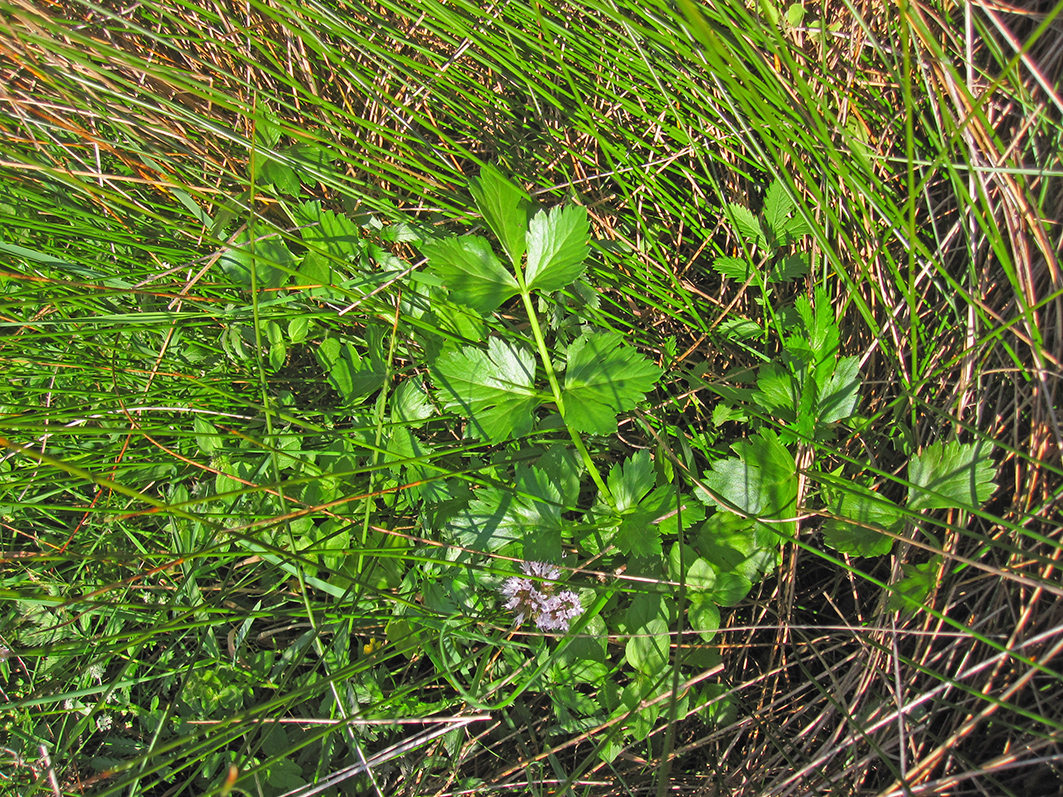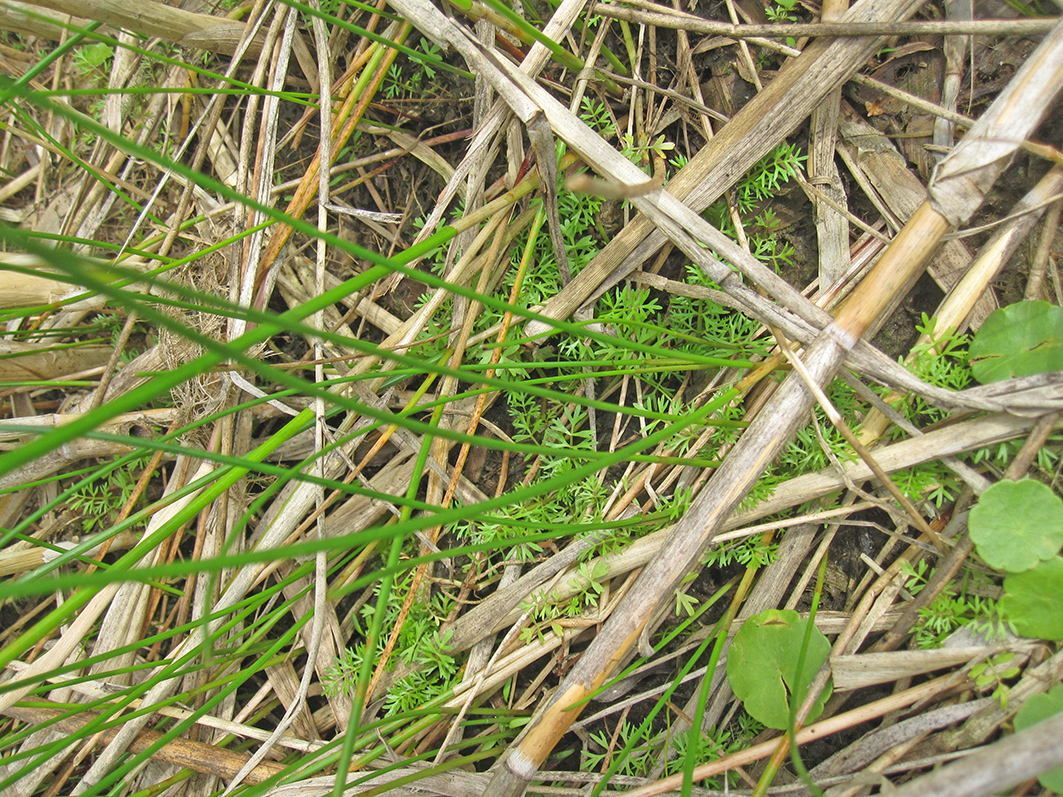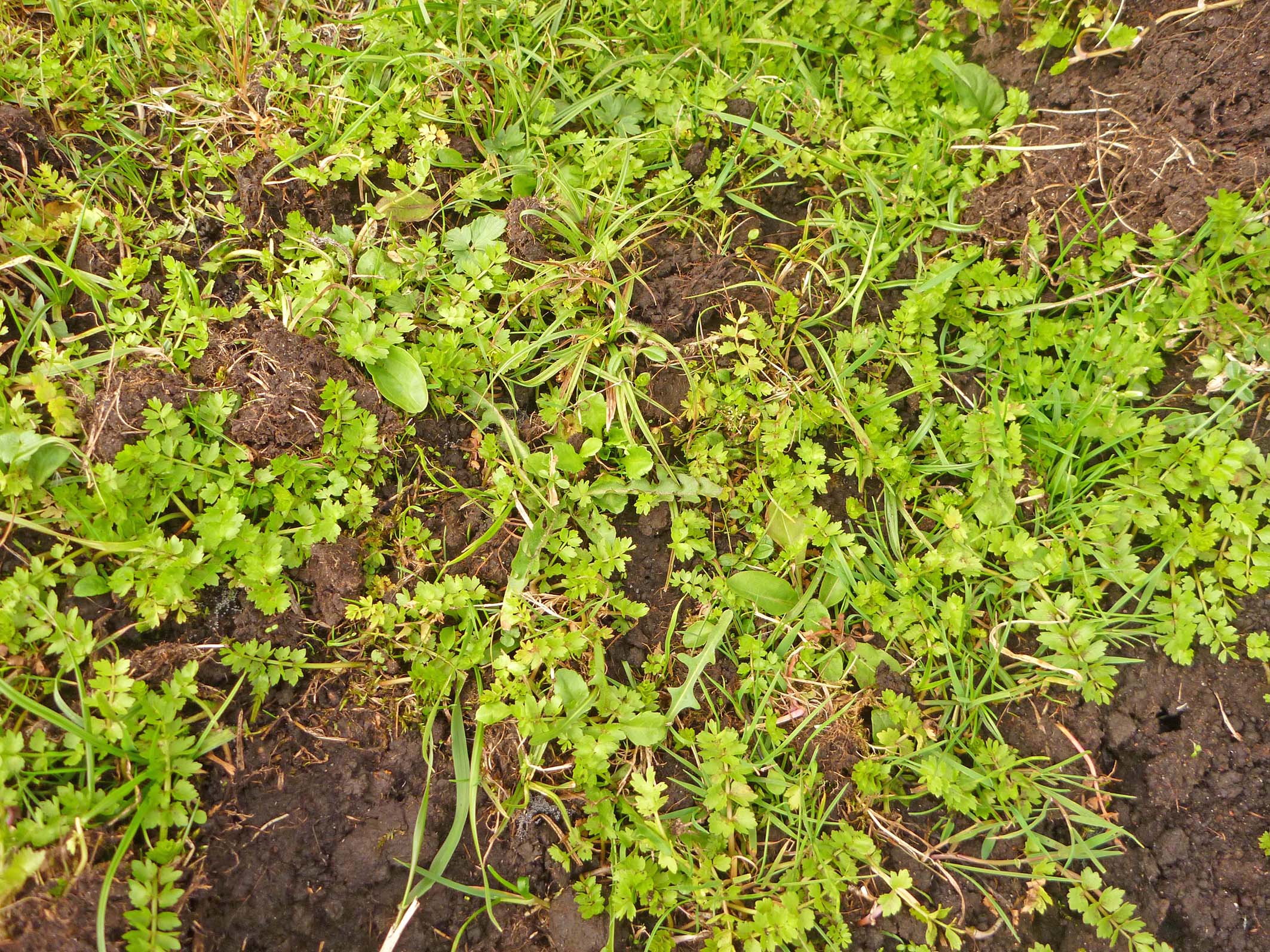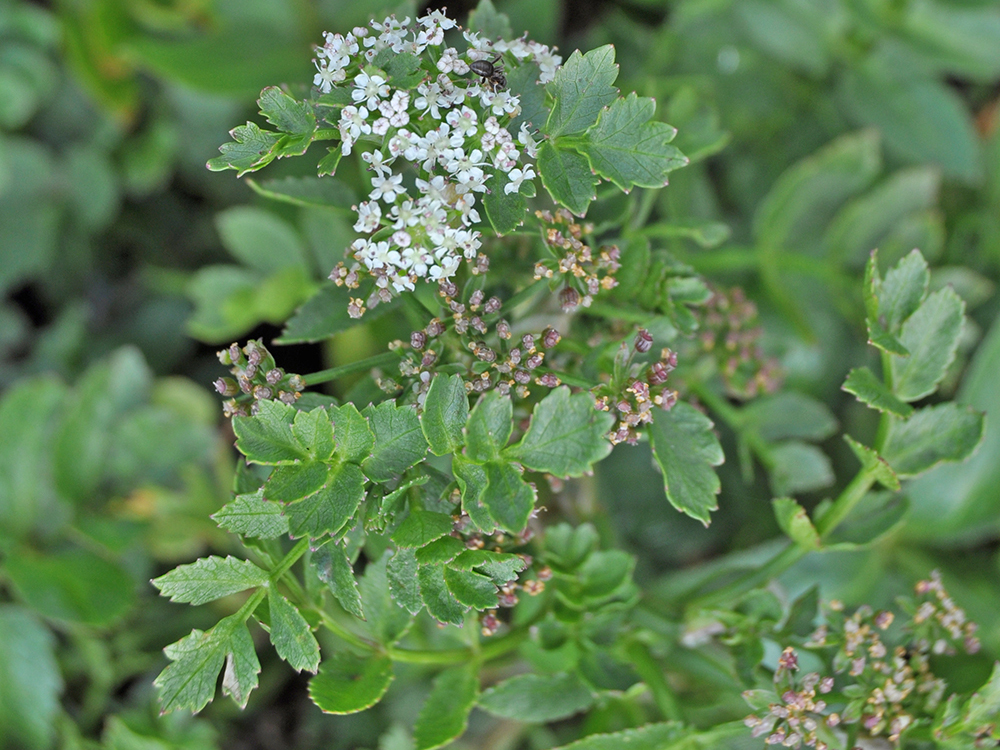Aim
Of the approximately 3500 plant species occurring in Germany, 2800 are considered wild species for food and agriculture. These include highly endangered species such as the wild celery Helosciadium repens.
 |  |
| Apium graveolens ssp. graveolens, (Photo: T. Herden) | Biotope of Helosciadium inundatum in Niedersachsen, (Photo: T. Herden) |
 |  |
| Helosciadium repens, (Photo: H. Ringel) | Leaf and blossom of Helosciadium nodiflorum, (Photo: A. Wilhelm) |
The aim of the project was to use wild celery species as model objects to demonstrate how the protection of crop wild relatives in their natural habitats can be improved by establishing a nationwide network of genetic reserves. The natural habitats in which wild celery species occur are often located in designated nature reserves or on private property. It was therefore essential for the success of the project to involve the local actors, to sensitise them to the uniqueness of the occurrence and to win them over as partners.
The project answered scientific, organisational and legal questions. In this way, the project created essential foundations for the effective protection of important plant genetic resources and closes a strategic gap in the catalogue of measures of the National Programme for the Conservation and Sustainable use of Plant Genetic Resources of Agricultural and Horticultural Crops of the Federal Ministry of Food and Agriculture in Germany.


